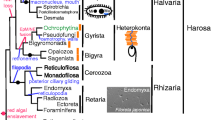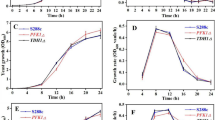Abstract
We analyzed the vacuolar acidification in response to elevated hydrostatic pressure in Saccharomyces cerevisiae. The vacuolar pH, defined using 6-carboxyfluorescein, was directly measured in a hyperbaric chamber with a transparent window under high hydrostatic pressure. The vacuole of strain X2180 became acidified at the onset of pressurization to an extent dependent on the magnitude of pressure applied. A pressure of 40–60 MPa transiently reduced the vacuolar pH by about 0.33 within 4 min. The transient acidification was observed in the presence of D-glucose, D-fructose, or D-mannose as a carbon source, but not 3-o-methyl-D-glucose, ethanol, or glycerol, suggesting that the generation of CO2 was involved in the process. A vma3 mutant defective in vacuolar acidification showed no reduction of vacuolar pH when hydrostatic pressure was applied. This result indicates that the transient vacuolar acidification induced by elevated hydrostatic pressure is mediated through the function of the vacuolar H+-ATPase.
Similar content being viewed by others
Author information
Authors and Affiliations
Additional information
Received: August 21, 1996 / Accepted: November 11, 1996
Rights and permissions
About this article
Cite this article
Abe, F., Horikoshi, K. Vacuolar acidification in Saccharomyces cerevisiae induced by elevated hydrostatic pressure is transient and is mediated by vacuolar H+-ATPase . Extremophiles 1, 89–93 (1997). https://doi.org/10.1007/s007920050019
Issue Date:
DOI: https://doi.org/10.1007/s007920050019




